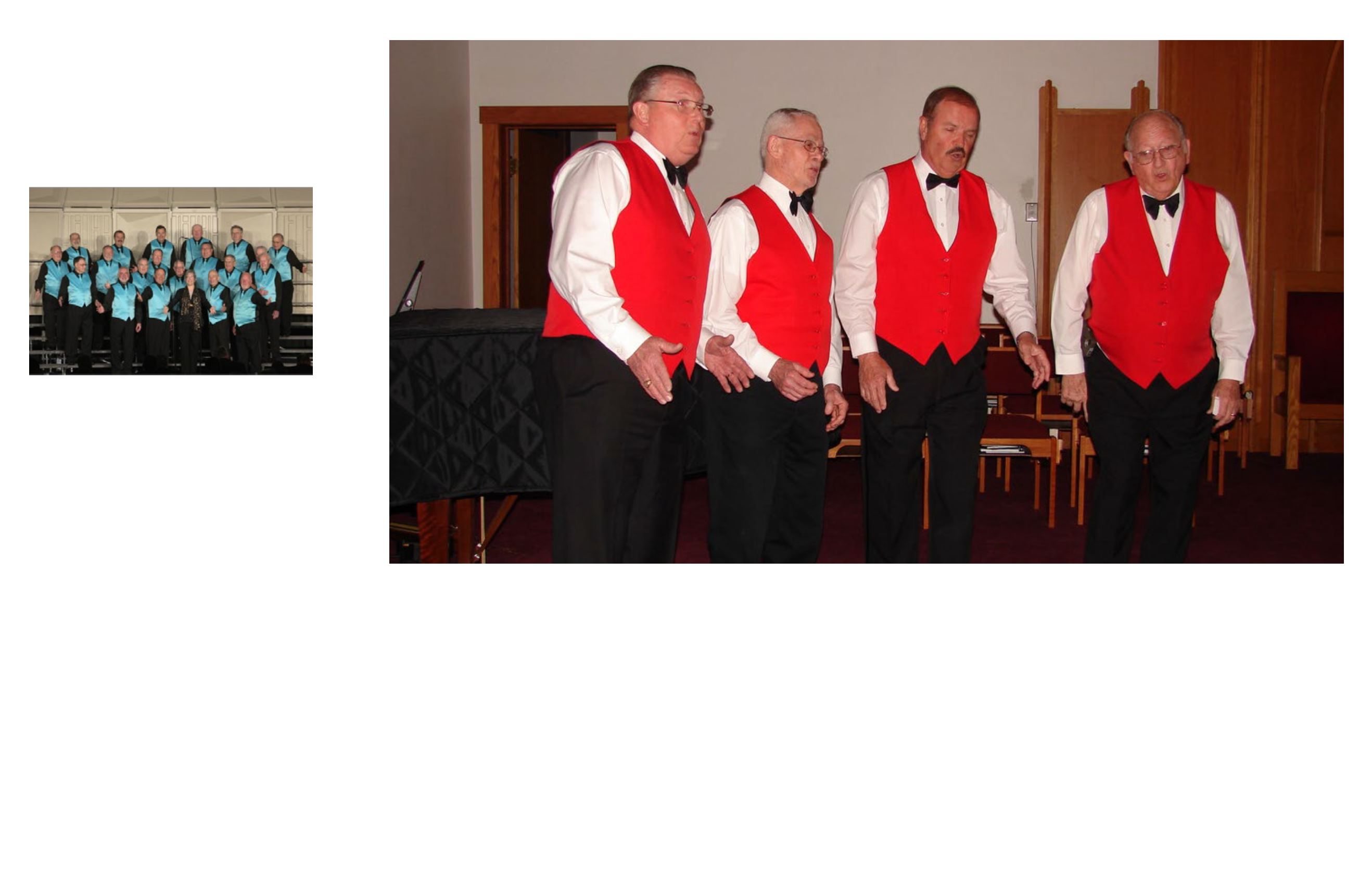
Discover Smith Mountain Lake
FALL 2016
51
50
Fun & Fellowship in
FourPart
Harmony
What do a retiredAirTraffic Controller,
an attorney, a decorated veteran Navy
pilot, a diplomat, and a Sunday school
teacher all have in common? Aside
from being retired, they all share a
love of singing in barbershop harmony.
They could be your friends, neighbors,
fishing buddies, and maybe even your
pastor.
If ever there was evidence of music
being a universal language, you’ll find
it when you get to know The Smith
Mountain Lake Harmeneers.These are
men from varied backgrounds, who
join together one evening a week for
fellowship, rehearsal, and the pure joy
of singing.
For these gentlemen, The Harmeneers
is a delightful blend of fun, camaraderie,
community service, and dedication to
the craft of Barbershop Harmony.There
is one trait that binds all these men
together: they derive great satisfaction
from blending their individual voices
into chords and creating that unique
sound.
Barbershop singing has its roots in 19th
CenturyAmerica. It is considered to be
a “melting pot” product of immigrant
influences, with a particularly strong
African influence. Many of the early
quartets that practiced what would
be called the “barbershop” style were
black southern quartets, who often
sang in barbershops. In some places, it
seemed that every barbershop had its
own quartet. The term appeared for
the first time in print in 1910, with
the publication of the song, “Play That
Barbershop Chord”.
Ask the average individual about their
musical tastes, and it’s not all that often
I’m thrilled at each rehearsal when I come into a room of men from all walks of life
and musical backgrounds, chatting about every thing under the sun, and the pitch
pipe blows. Suddenly, the chaos ceases and a pitch is taken. A song begins, and the
voices blend with a synergistic relationship to form that sound we so affectionately
call Barbershop.
~ Gary Bennett, SML Harmeneers
By Tim Ernandes


